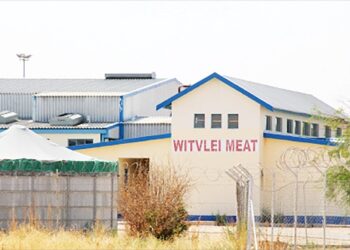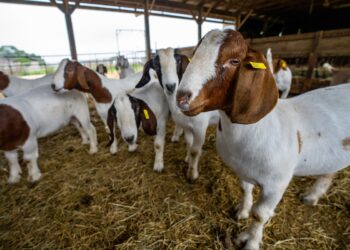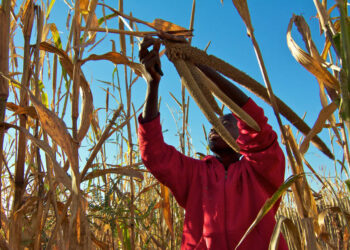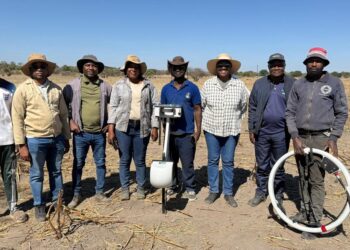
Now more than ever, the events and effects of climate change are evident in Namibia. Since the previous drought that hit the country between the 2013 and 2019 seasons, rainfall activities have been erratic, and occurrence of associated events such as disease and pest outbreaks, recurrent drought and floods is common in Namibia.
 Therefore, it should be noted that each subsequent rainy season would be unique or may present different conditions that negatively affect agricultural production in the country. Bearing in mind the above, farmers need to learn from previous seasons for timeous planning and preparedness.
Both livestock and crop farmers are currently worried about the prevailing weather conditions. Some parts of the country received good early rainfall in October, whereas other parts received late rains. It is worth noting that this is not an attribute of a good rainy season as it was not well distributed, and rangeland productivity in some areas is still not optimal.
In addition, there are little or no comfortable signs of relief for the remaining months of the season. Therefore, if the remaining months receive rain, it may not have an immediate improvement on rangeland productivity but will have a long-term advantage towards soil rehydration or soil moisture content which will be needed by plants after the dormancy period.
The signs of drought are clear; thus, farmers need to already develop drought-coping strategies to ensure that their animals survive until the next rainy season. In general, they need to prepare for water scarcity, higher temperatures, poor grazing conditions, and associated threats to livestock health. Drought is characterized by a period of insufficient rainfall (far below average/normal) resulting in dehydrated and unproductive soil conditions.
As for the livestock farmers, this compromises rangeland and livestock productivity, farm income, and livelihoods. During drought, market prices fall drastically due to increasing costs of production and the deteriorating livestock conditions due to thirst, hunger, and illnesses.
In the previous drought, farmers lost their livestock, hence they have been restocking their livestock numbers to take advantage of the improved rangeland conditions following better rainfall activities after the drought. However, the
current conditions pose a threat to their restocking efforts as farmers are now facing heavier financial burdens to maintain their livestock.
Farmers can now look at the most feasible options to withstand or minimize the consequences of drought conditions. These options include relocating, feeding, and selling livestock. When a farmer decides on any or all three options, there are some key considerations to ensure that the decision is economical and not counter-productive in the end. See a basic guide below:
- Relocating animalsÂ
Say a farmer elects to relocate his/her animals, that farmer must select a location or an area with reliable grazing, water supply, security, and access to essential services e.g., feed supplies. Secondly, it is imperative that the farmer selects an appropriate mode of transport, determine the distance, and carefully select the animals that are to be relocated e.g., older, weak, heavily pregnant animals cannot walk long distances.
- Selling animals
Should a farmer choose to sell his/her animals, that farmer must ensure to select the most vulnerable and poor performing animals and sell them before their conditions deteriorate. Secondly, the farmer must select the best possible time and marketplace where prices would be favourable. Lastly, with this option, the farmer must develop a budget to feed the remaining animals, and for probable restocking after the drought.
- Feeding animals
This option will require the farmer to group his/her animals based on their production stages and select suitable feeds e.g., feeding regime for lactating cows versus dry cows. The farmer must determine the quantity of feeds required, the sources, and the costs thereof.
Lastly, when selecting this option, the farmer must develop a sustainable farm fodder flow plan e.g., use of own production and processing, including other sources before, during, and after a drought). To achieve this, it is advisable for a farmer to acquire a hammer mill to cheaply produce, process, and formulate feed rations to rescue or prevent starvation in animals.
Finally, no drought conditions of different years are similar, and there is no standard recipe to cope with drought. Therefore, every year, a farmer should re-assess the status of his/her farm enterprise in terms of finances, feeds, and ability to survive any drought year.
*Erastus Ngaruka, Technical Advisor: Livestock & Rangeland Management











